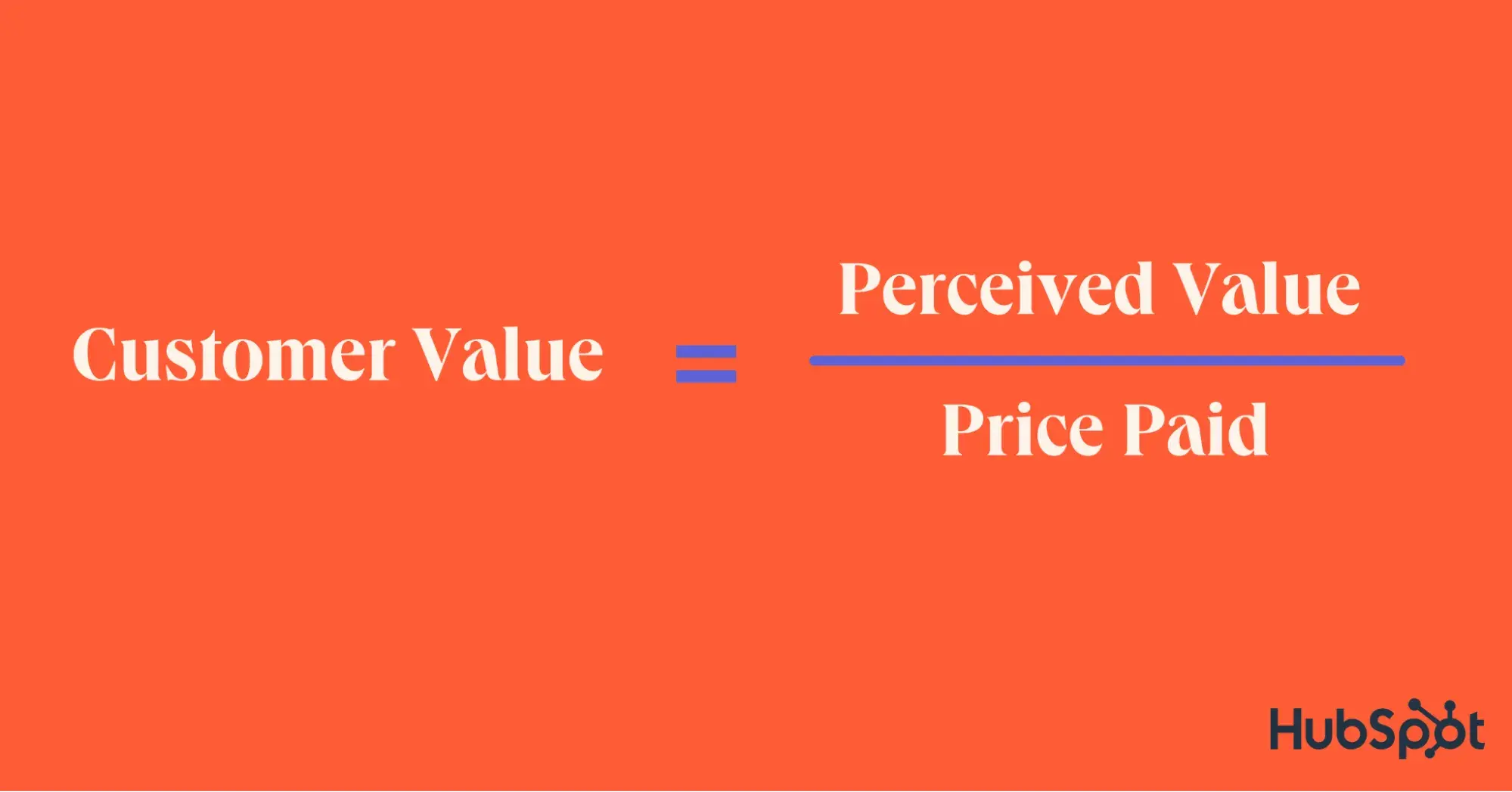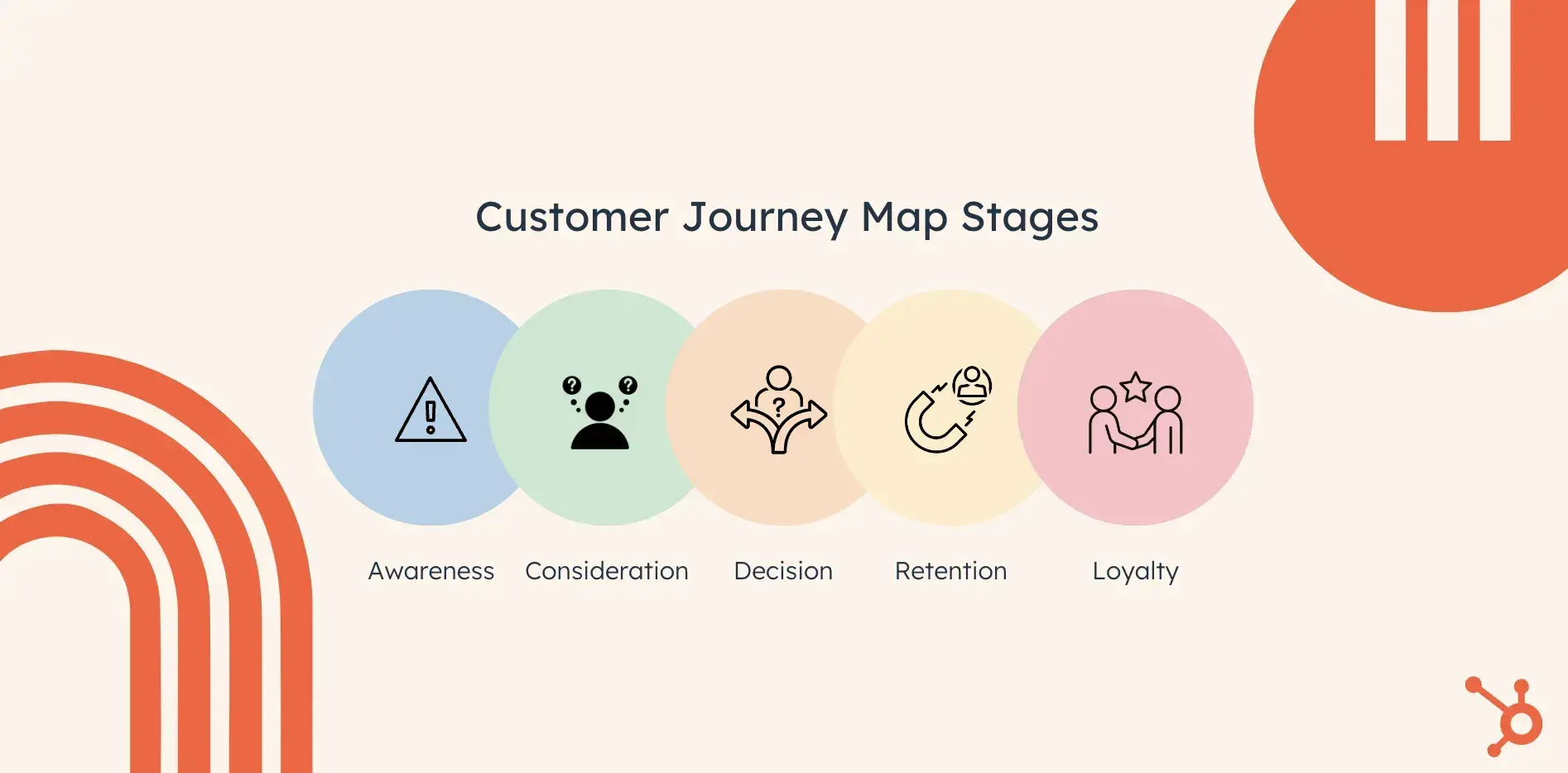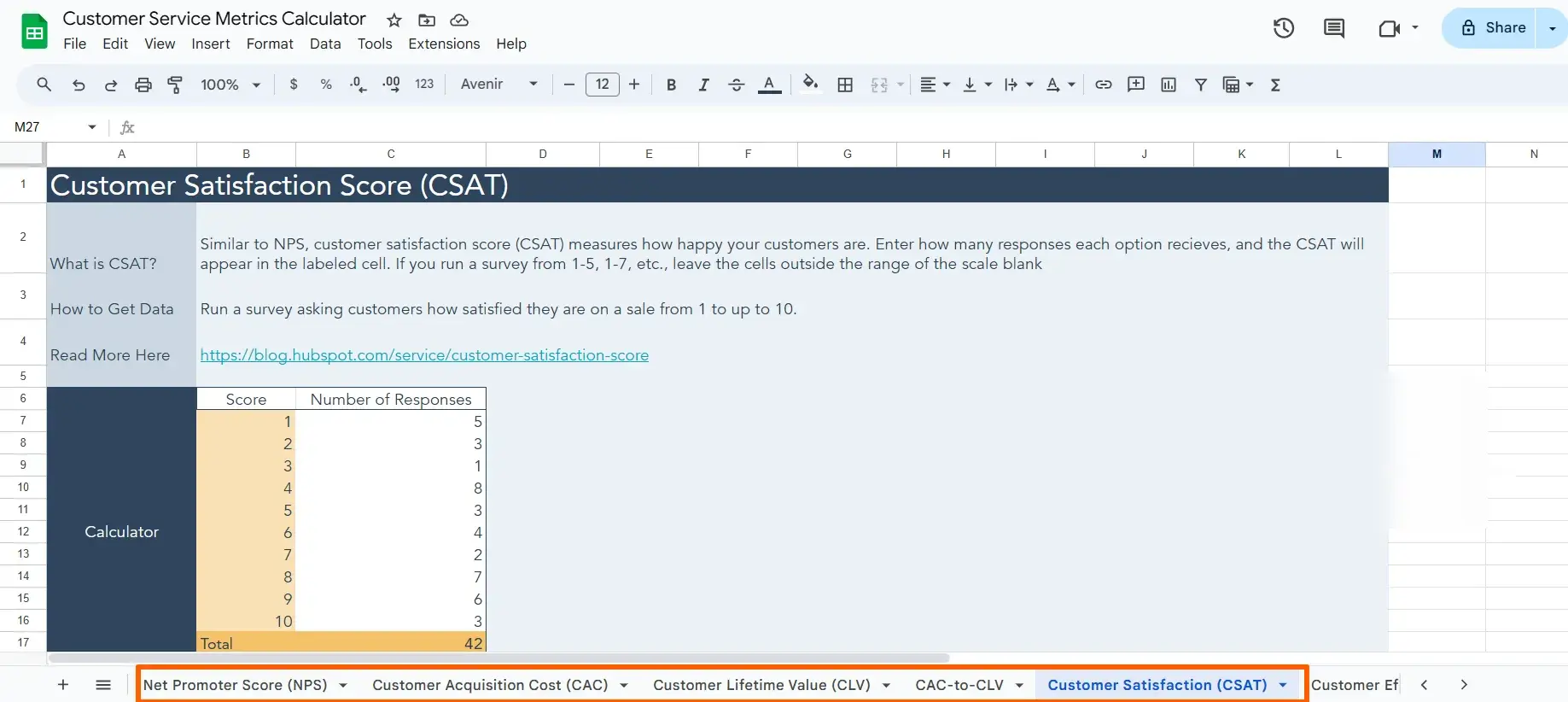Here’s what you’ll learn in this post:
- What Is Customer Value?
- How to Measure Customer Value
- Tips to Increase Customer Value
- Why Is Customer Value Important?
- Challenges in Measuring Customer Value
- Customer Value = Competitive Edge
What Is Customer Value?
Customer value is what your customers believe they’re getting from your product or service compared to what they paid for it.
“What they’re getting” is a reflection of how well your product or service fulfills the customer's different needs or "jobs.” These jobs can be divided into three categories: functional, social, and emotional.
Consider a customer looking for cloud storage services. They’re not only looking for another product to buy but a solution to specific needs or “jobs” that might include:
Functional job: A reliable and secure way to store files online.
Emotional job: Reassurance that their data is safely backed up, alleviating fears of losing their data.
Social job: Improved productivity through efficient file management, reflecting their wonderful organizational skills.
Customers who pay for a cloud storage service will evaluate its value based on how well it performs these jobs compared to alternatives.
This evaluation forms their perception of value. However, the actual delivered value may differ. For example, a cloud service might offer more storage space than a customer realizes, representing a higher delivered value than perceived.
Conversely, if the cloud service makes it difficult for the customer to share files, they might feel that the total cost of the service outweighs its benefits, and they'll have buyer’s remorse.
This is especially true if a competitor is making a better offer than yours for a similar product or service.
Why Is Customer Value Important?
Customer value affects customer satisfaction, loyalty, and, ultimately, business success.
Understanding and delivering customer value helps you set competitive prices, reduce friction at different touchpoints of the customer’s buying journey, and ensure that customers feel they’re getting value for their money.
Customer value is a complex interplay between two key elements: perceived value and delivered value. Perceived value stems from how well a product or service fulfills various “jobs” (that we’ve mentioned above) for the customer, which can be categorized as functional, social, or emotional.
It is also what customers believe they're getting from a product or service based on their expectations, experiences, and subjective evaluations.
On the other hand, delivered value is the actual benefit or utility that the product or service provides.
The relationship between these two elements can be expressed as a ratio:
Customer Value = Perceived Value / Price Paid
This ratio highlights that value is not just about what a product or service objectively delivers but also about how customers subjectively perceive its benefits in relation to its cost.
Customers always look for value in the products or services they pay for and want to feel like they're getting value for their money.
The balance between this perceived value and the price paid determines whether customers feel they've received sufficient value for their money. The gap between perceived and delivered value can significantly affect customer satisfaction and loyalty.

Challenges in Measuring Customer Value
Despite the clear importance of customer value, companies still struggle to measure it.
Inaccurate measurements of customer value mean that you'll make the wrong decisions when trying to improve customer value.
For example, you might use pricing strategies that aren’t aligned with customers' willingness to pay or marketing efforts with the wrong value propositions.
What one customer considers valuable may not appeal to another.
This subjectivity in what different customers find valuable is influenced by personal preferences, quality of customer experience, innovation, trust, and reliability.
For example, one customer segment might value a product’s innovation, while another segment might find more value in the product’s reliability and ease of use.
Secondly, customer value is not static. It evolves in response to market conditions, increasing awareness and knowledge, changing needs and priorities, and cultural and social influences.
For example, while standalone CRM systems were once considered innovative, they have evolved into more integrated solutions, becoming an industry standard with new features and improved capabilities.
While these challenges exist, they shouldn't deter you from measuring customer value. In fact, understanding these challenges marks the first step towards developing more accurate and nuanced approaches to quantifying and enhancing the value you provide.
How to Measure Customer Value
- Identify total customer benefits.
- Identify total customer costs.
- Calculate customer value.
Measuring customer value involves evaluating both the total customer benefits and the total customer costs. By understanding these components, you can assess how customers perceive the value they get from your product or service.
To identify customer benefits and customer costs, you need both quantitative and qualitative customer data. I’ll dive deeper into each component below.
1. Identify total customer benefits.
Quantitative methods:
- Net Promoter Score (NPS). The Net Promoter Score (NPS) measures customer loyalty and their likelihood to recommend your product to others, which indicates its perceived benefits.
- Customer Satisfaction Score (CSAT). This score measures a customer's overall satisfaction level and reflects the benefits customers perceive from a product or service.
- Customer Lifetime Value (CLV). This metric quantifies the long-term benefits customers perceive from your business, helping you focus your efforts on retaining high-value customers.
- Customer Effort Score (CES). It measures the ease of use of a product or service, which is a significant factor in perceived benefits.
Qualitative Methods:
- Customer feedback and surveys. These provide detailed insights into the perceived benefits customers derive from their experiences with your product or service.
- Customer reviews and testimonials. These provide unfiltered opinions from real customers, showcasing both their positive perceptions and areas for improvement.
- Customer interviews. These allow in-depth exploration of customers' needs and the features they value.
- Social media listening. It captures spontaneous customer discussions, revealing trends in perceived benefits.
- Chatbots and live chat transcripts. These offer insights into real-time interactions, reflecting the pain points affecting customers and the features they find valuable.
This combination of quantitative and qualitative methods provides a comprehensive view of total customer benefits.
I like to think of it like this: Quantitative methods offer measurable data points, while qualitative methods provide context and depth to understand the “why” behind the numbers.
2. Identify total customer costs.
Monetary costs:
- Price. The direct cost of purchasing your product or service.
- Subscription fees. Ongoing costs associated with continued use.
Non-monetary costs:
- Learning curve. The amount of time and effort required to learn how to use your product or service.
- Switching costs. The cost of transitioning from another solution to yours, including time, effort, and potential disruption.
- Opportunity cost. The value of alternative solutions customers forgo by choosing your product or service.
3. Calculate customer value.
In this example calculation, I’m going to demonstrate how to calculate customer value. Let's consider a hypothetical SaaS company and assume that we have data on qualitative and quantitative metrics.
Step 1: Gather quantitative data (Total customer benefits).
- NPS: 45 (indicating strong word-of-mouth potential)
- CSAT: 4.2 (on a scale of 1 to 5, indicating high satisfaction)
- CLV: $5,000
- CES: 5.8 (on a scale of 1 to 7, indicating ease of use)
Step 2: Analyze qualitative data (Total customer benefits).
- Customer feedback: 80% of customers praise reliability; 60% praise customer support.
- Customer reviews: Positive themes include time-saving features; negative themes include a steep learning curve.
- Customer interviews: Customers value workflow streamlining; some seek more advanced analytics.
- Social media listening: Positive sentiment around feature updates; discussions about competitors offering lower prices.
- Chatbot and live chat transcripts: Frequent questions about advanced features; requests for comprehensive onboarding resources.
Step 3: Calculate total customer costs.
- Monetary costs: Average price per subscription: $500/year.
- Learning curve: Estimated at 10 hours to fully understand all features.
- Opportunity costs: A competitor offering similar services at a lower price point, valued at $400/year.
Step 4: Determine customer value.
Customer Value = Total Customer Benefits — Total Customer Costs
- Total customer benefits: Start with CLV ($5,000). Adjust upward for high NPS and CSAT (+$500) and qualitative value additions (+$500).
- Total customer costs: Combine monetary costs ($500), learning curve (valued at $200 based on data from customer feedback software), and opportunity costs ($400).
- Customer value calculation:
- Total customer benefits: $5,000 + $500 + $500 = $6,000
- Total customer costs: $500 + $200 + $400 = $1,100
- Customer value: $6,000 – $1,100 = $4,900
Step 5. Action plan.
Based on this analysis, the SaaS company could:
- Invest in improving the user interface and onboarding process to reduce the learning curve and associated costs.
- Develop and market advanced analytics features to increase perceived benefits.
- Consider tiered pricing options to align better with customer budgets and reduce opportunity costs.
- Continue focusing on product reliability and customer support.
- Gather case studies and testimonials from satisfied customers to enhance perceived value among potential customers.
By carefully evaluating both total customer benefits and total customer costs, you can calculate customer value more accurately and develop targeted strategies to maximize it.
Tips to Increase Customer Value
- Evaluate your customer experience.
- Focus on more than price.
- Use customer feedback to increase value.
- Target your loyal customers.
- Segment your customer base.
- Integrate touchpoints for a cohesive experience.
- Deliver customer value consistently.
- Create a community around your brand.
- Optimize your onboarding process.
Having known how to calculate customer value, let's look at nine tips that will help inform your next course of action based on the value you get from your calculations;
1. Evaluate your customer experience.
When increasing customer value, analyze your customers' experiences to identify interactions at different touchpoints that might cause friction in their buying journey.
I recommend you create a customer journey map that outlines each step your customers take when buying from your business.

Once you can visualize every action your customers take, it's easier to identify opportunities to add value.
To make this evaluation actionable, your customer journey map needs to include details such as:
- Touchpoints between the customer and your business.
- Critical actions at each touchpoint.
- Customer emotions and pain points.
Conduct customer surveys for each touchpoint to collect feedback, analyze your customer service data to identify common issues, and implement user testing for your website or app to observe actual user behavior.
Review your analytics data to identify drop-off points in the customer journey. Use this comprehensive analysis to create and implement an improvement action plan that includes:
- Touchpoints where you can delight your customers and prospects.
- Touchpoints where you can eliminate friction.
Since this is an ongoing process, monitor results and gather feedback to refine your customer experience and increase customer value.
2. Focus on more than price.
Competing on price alone is not sustainable. It erodes your profit margins, limits differentiation, and reduces customer loyalty.
It also makes you vulnerable to new entrants, market changes, and hinders innovation.
However, that doesn‘t mean you can’t create a competitive offer that delivers customer value. Since customer needs range from convenience, reliability, and innovation to performance, you can rely on plenty of non-monetary benefits to increase customer value.
To deliver customer value beyond focusing on price alone, conduct a competitive analysis to identify non-price areas where you can differentiate your offering.
Survey your customers to understand which non-price factors they value most during their decision-making process.
Based on your findings, implement improvements in areas like customer service and product or service quality.
Enhance your value proposition to go beyond mere cost considerations. Then, train your sales team to use these benefits and value propositions during sales calls with potential customers.
3. Use customer feedback to increase value.
Increasing customer value effectively requires you to pay attention to what customers value about your product or service rather than relying solely on what you think they value.
To achieve this, you need access to both quantitative and qualitative customer data. Collect this data using web analytics, customer service, and heat mapping tools.
Conduct regular customer surveys, including satisfaction and Net Promoter Score (NPS) surveys.
Analyze purchase data by examining average order value and customer lifetime value. Don't neglect qualitative data — conduct in-depth customer interviews, implement feedback mechanisms such as forms, and analyze transcripts from customer interactions.
Additionally, monitor social media for mentions about your brand and review sites like G2 and TrustRadius for unsolicited customer feedback.
Once you collect this data, create a centralized data dashboard to compile all this information.
Pro tip: An excellent place to start is by using this customer service metrics calculator that makes it easy to collect, view, and share different customer service metrics;

Hold regular cross-functional meetings to review this data and identify trends in customer needs and preferences.
This process allows different departments to justify proposed changes to business operations with facts and statistics, enabling leadership to make confident decisions about enhancing customer value.
4. Target your loyal customers.
You might think that because a customer is loyal, they're already receiving value from your business.
You‘d be right. However, just because someone is loyal to your business doesn’t mean you can‘t — or shouldn’t — optimize their customer value.
Adding more benefits to your customer loyalty programs can generate even more value for your customers. This approach retains your loyal customers and attracts new ones through word-of-mouth recommendations.
To effectively target your loyal customers, implement a tiered loyalty program with increasing benefits for higher tiers. To make your top-tier customers feel valued, create exclusive experiences such as premium support or early access to products.
Develop a referral program with rewards for customer advocacy, encouraging your loyal customers to bring in new business.
Set up a VIP customer feedback panel for product development input, making your most loyal customers feel like insiders in your business.
Leverage these relationships by exchanging benefits for customer testimonials and reviews. This approach adds value to your loyal customers and helps acquire new customers through positive word-of-mouth.
5. Segment your customer base.
As I mentioned earlier, customer value can vary depending on who you‘re talking to, and a customer’s needs, preferences, and goals will influence their definition of “value.”
Not all customers are alike, which creates discrepancies when measuring value in your business.
That's why segmenting your customer base into specific target audiences is essential. Use your CRM and analytics data to segment your customer base and identify distinct customer groups effectively.
Develop detailed personas for each segment to understand their needs and preferences better. Then, use this information to create relevant marketing campaigns for each segment, ensuring your messaging resonates with each group.
Develop tailored product recommendations based on segment preferences, and consider customizing your website experience for different segments. This could involve showing different homepage content or product categories based on the customer segment.
Finally, measure and compare customer value metrics across segments to understand which groups are most valuable to your business and why.
This segmented approach allows you to maximize value for each customer segment rather than using a one-size-fits-all strategy.
Remember, customer value is essential to track, but it‘s not as easy as inputting numbers into a simple formula. It’s all about measuring tangible benefits and perceived value in addition to the actual cost of a product.
Implementing these strategies and continually refining your approach based on the results can significantly enhance the value you provide to your customers.
6. Integrate touchpoints for a cohesive experience.
In addition to providing a better customer experience across all touchpoints, I think you also need to ensure that these channels are integrated to reduce friction.
This is where the concept of delivering an omnichannel customer experience comes into play. Unlike multi-channel approaches, which treat each channel separately, an omnichannel strategy ensures seamless integration across all customer interactions, whether online, in-store, or through a mobile app.
To achieve this integration, break down organizational silos. This often requires a shift in company culture and structure, moving away from channel-specific teams towards customer-centric teams that oversee the entire customer journey.
It may involve reorganizing departments, adjusting performance metrics, and implementing new communication systems to ensure all teams align with customer value objectives.
Successful integration often relies on unified customer data platforms. These systems collect and analyze data from all touchpoints, providing a 360-degree view of the customer.
For example, a customer's online browsing history could inform their in-store experience or their purchase history could personalize their email marketing.
7. Deliver customer value consistently.
Delivering consistent value across all customer interactions is essential for maintaining and enhancing customer loyalty. Consistency builds trust and reliability, two critical components of a solid customer-brand relationship.
When customers experience varying levels of value or receive conflicting information during different interactions with a company, it can lead to frustration and confusion. This inconsistency ultimately damages their perception of the brand's value.
Inconsistent experiences can lead to:
- Erosion of trust. When customers can‘t rely on consistent value, they may question the company’s commitment to their satisfaction.
- Reduced loyalty. Inconsistency can drive customers to seek out competitors who offer more reliable experiences.
- Negative word-of-mouth. Disappointed customers will likely share their negative experiences, potentially damaging the brand's reputation.
Consider a software company that provides excellent initial onboarding but fails to maintain that level of support throughout the customer lifecycle. The initial positive experience sets high expectations, but subsequent interactions fall short, leading to customer dissatisfaction and potential churn.
Another example I can think of is a subscription service that offers premium features to new customers, but doesn't extend the same benefits to long-term loyal customers. This inconsistency in value delivery can make existing customers feel undervalued and more likely to switch to competitors.
To ensure consistent value delivery:
- Establish clear value propositions and ensure all team members understand and can articulate them.
- Implement robust training programs to maintain consistent quality across all customer-facing roles.
- Regularly gather and act on customer feedback to identify and address inconsistencies in value delivery.
- Use data analytics to track customer interactions and ensure consistent experiences over time.
- Create and maintain up-to-date documentation of processes and policies to guide consistent decision-making.
By prioritizing consistency in value delivery, companies can build stronger customer relationships, increasing loyalty and long-term business success.
8. Create a community around your brand.
Building a community can significantly enhance customer value by fostering connections, loyalty, and a sense of belonging. Creating such a community doesn't have to be expensive or complex — you can leverage existing platforms to get started.
Subreddits on Reddit, Discord servers, or Slack workspaces can all serve as cost-effective and user-friendly foundations for your brand community. Most of your users are already familiar with these platforms, and I think this lowers the barrier to entry and encourages participation.
Pro tip: To make your community thrive, encourage users to share their experiences, tips, or creative uses of your product. Host regular Q&A sessions or AMAs (Ask Me Anything) with company experts or industry thought leaders.
Providing exclusive value to your community could include giving them early access to new features or products, offering community-only promotions or discounts, or providing behind-the-scenes insights into your company's processes or upcoming developments.
Foster peer-to-peer support within your community by creating spaces where customers can help each other solve problems and implement a system to recognize and reward members who consistently provide valuable assistance. This not only enhances the value of the community but also reduces the burden on your customer support team.
Speaking of customer support, I would consider integrating it with your community efforts. Train your support team to engage within the community platforms and develop comprehensive FAQs and wikis based on common community questions and discussions.
To ensure your community remains effective, track engagement metrics, gather feedback from community members, and continuously refine your community strategy based on this data.
9. Optimize your onboarding process.
An optimized onboarding process accelerates time to value by helping customers quickly grasp and utilize core features, leading to faster benefit realization.
This process naturally encourages increased product adoption as users explore more capabilities, extracting more value from their investment.
To achieve this, include progressive disclosure in your onboarding process, introducing features gradually to avoid overwhelming users.
For instance, a video editing app could begin with basic cutting and transitions, then introduce effects and color grading tools later as users become more proficient. This approach allows customers to build confidence with core functionalities before exploring more advanced options.
Furthermore, personalizing the experience tailors the onboarding process to each user's specific needs and goals.
For example, a CRM might ask new users about their role (sales rep, manager, or support), team size, and primary objectives (lead generation, deal closing, or customer retention).
With this information, it can then customize the initial dashboard layout and feature highlights accordingly. This personalized approach ensures that users are immediately presented with the most relevant features for their use cases.
Pro tip: Adding progressive disclosure and personalization into your customer success playbook can create a more effective and user-friendly onboarding experience, setting the foundation for you to deliver unparalleled customer value.
Customer Value = Competitive Edge
Understanding and delivering customer value isn‘t just a business strategy — it’s what will give you a competitive edge over your competitors and help you build a sustainable business.
Now that I’ve discussed why customer value matters, why measuring it is challenging, how to calculate it, and tips to help you take action based on your findings, it's time to act.
After calculating your current customer value, what will your next move be? Will you start by reassessing your customer journey, revamping your loyalty program, or diving deep into customer segmentation?
Will you optimize your onboarding process and renew your focus on your existing community to make it more vibrant?
The choice is yours, but don’t forget: your customers are waiting.
Editor's note: This article was originally published in March 2020 and has since been updated for comprehensiveness.
Customer Experience






![Is The Customer Always Right? [What It Means + Why It Matters]](https://53.fs1.hubspotusercontent-na1.net/hubfs/53/customer-is-always-right-origin-1-20250202-6448090.webp)





